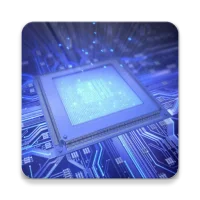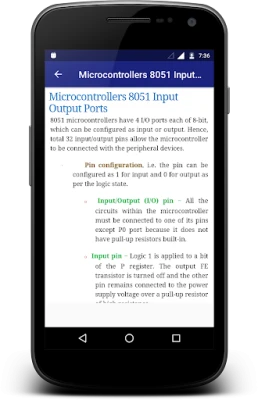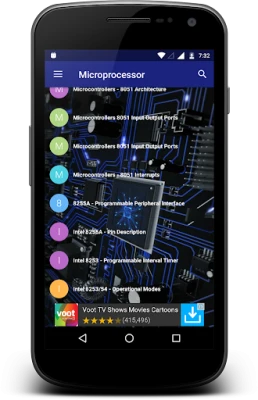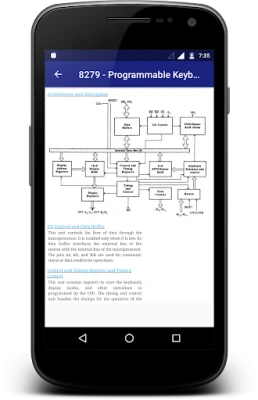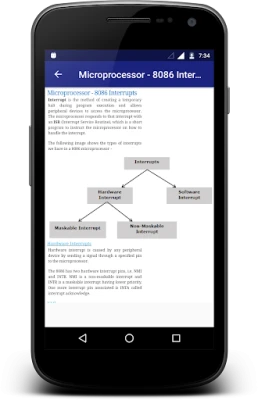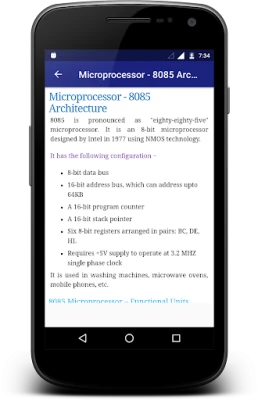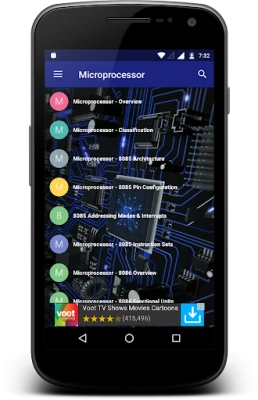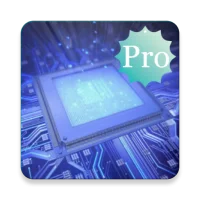
Latest Version
Version
1.8
1.8
Update
December 02, 2024
December 02, 2024
Developer
Intelitech
Intelitech
Categories
Education
Education
Platforms
Android
Android
Downloads
0
0
License
Free
Free
Package Name
in.softecks.microprocessor
in.softecks.microprocessor
Report
Report a Problem
Report a Problem
More About Microprocessor
✴A silicon chip that contains a CPU. In the world of personal computers, the terms microprocessor and CPU are used interchangeably. At the heart of all personal computers and most workstations sits a microprocessor. Microprocessors also control the logic of almost all digital devices, from clock radios to fuel-injection system for automobiles.✴
❰ Three basic characteristics differentiate microprocessors: ❱
► Instruction set: The set of instructions that the microprocessor can execute.
► bandwidth : The number of bits processed in a single instruction.
► clock speed : Given in megahertz (MHz), the clock speed determines how many instructions per second the processor can execute.
✦In both cases, the higher the value, the more powerful the CPU. For example, a 32-bit microprocessor that runs at 50MHz is more powerful than a 16-bit microprocessor that runs at 25MHz.✦
✦In addition to bandwidth and clock speed, microprocessors are classified as being either RISC (reduced instruction set computer) or CISC(complex instruction set computer).✦
【Topics Covered in this App are Listed Below】
⇢ Overview
⇢ Classification
⇢ 8085 Architecture
⇢ 8085 Pin Configuration
⇢ 8085 Addressing Modes & Interrupts
⇢ 8085 Instruction Sets
⇢ 8086 Overview
⇢ 8086 Functional Units
⇢ 8086 Pin Configuration
⇢ 8086 Instruction Sets
⇢ 8086 Interrupts
⇢ 8086 Addressing Modes
⇢ Multiprocessor Configuration Overview
⇢ 8087 Numeric Data Processor
⇢ I/O Interfacing Overview
⇢ 8279 - Programmable Keyboard
⇢ 8257 DMA Controller
⇢ Microcontrollers - Overview
⇢ 8051 Architecture
⇢ 8051 Input Output Ports
⇢ 8051 Input Output Ports
⇢ 8051 Interrupts
⇢ 8255A - Programmable Peripheral Interface
⇢ Intel 8255A - Pin Description
⇢ Intel 8253 - Programmable Interval Timer
⇢ Intel 8253/54 - Operational Modes
► Instruction set: The set of instructions that the microprocessor can execute.
► bandwidth : The number of bits processed in a single instruction.
► clock speed : Given in megahertz (MHz), the clock speed determines how many instructions per second the processor can execute.
✦In both cases, the higher the value, the more powerful the CPU. For example, a 32-bit microprocessor that runs at 50MHz is more powerful than a 16-bit microprocessor that runs at 25MHz.✦
✦In addition to bandwidth and clock speed, microprocessors are classified as being either RISC (reduced instruction set computer) or CISC(complex instruction set computer).✦
【Topics Covered in this App are Listed Below】
⇢ Overview
⇢ Classification
⇢ 8085 Architecture
⇢ 8085 Pin Configuration
⇢ 8085 Addressing Modes & Interrupts
⇢ 8085 Instruction Sets
⇢ 8086 Overview
⇢ 8086 Functional Units
⇢ 8086 Pin Configuration
⇢ 8086 Instruction Sets
⇢ 8086 Interrupts
⇢ 8086 Addressing Modes
⇢ Multiprocessor Configuration Overview
⇢ 8087 Numeric Data Processor
⇢ I/O Interfacing Overview
⇢ 8279 - Programmable Keyboard
⇢ 8257 DMA Controller
⇢ Microcontrollers - Overview
⇢ 8051 Architecture
⇢ 8051 Input Output Ports
⇢ 8051 Input Output Ports
⇢ 8051 Interrupts
⇢ 8255A - Programmable Peripheral Interface
⇢ Intel 8255A - Pin Description
⇢ Intel 8253 - Programmable Interval Timer
⇢ Intel 8253/54 - Operational Modes
Rate the App
Add Comment & Review
User Reviews
Based on 0 reviews
No reviews added yet.
Comments will not be approved to be posted if they are SPAM, abusive, off-topic, use profanity, contain a personal attack, or promote hate of any kind.
More »










Popular Apps

PlurallEDUMOBI

Device Info: Check System, CPUToraLabs

Archaeologist - Ancient EgyptMagisterApp - Educational Games for kids

Pluralsight SkillsPluralsight

MetalstormStarform, Inc

Plurals Test & Practice PROLittleBigPlay - Word, Educational & Puzzle Games
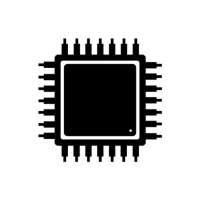
CPU Info (open-source)KG Soft

Infinite Flight SimulatorInfinite Flight LLC

Airplane Chefs - Cooking GameNordcurrent Games

Busuu: Learn & Speak LanguagesBusuu
